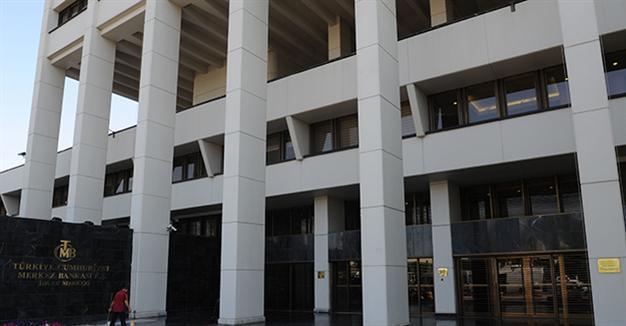Turkish Central Bank cuts top rate for fourth consecutive month
ANKARA

HÜRRİYET photo
The Central Bank cut its overnight lending rate by 50 basis points to 9 percent on June 21, as expected, marking its fourth straight month of easing.
The Bank’s monetary policy committee also cut the lending rate from 11 percent to 10.5 percent, while it left its benchmark one-week repo rate on hold at 7.5 percent.
The overnight borrowing rate, under which banks lend or deposit money to the Central Bank, also remained unchanged at 7.25 percent.
Turkey has thus eased its lending rate by 175 basis points since March, the last three times under Murat Çetinkaya, who took over as governor in April.
The committee said in a written statement that it would maintain a tight monetary policy in view of inflation expectations and pricing behavior.
It noted that inflation displayed a marked decline in recent months, mainly due to a favorable course in unprocessed food prices and an improvement in the core inflation trend.
“However, the developments in services inflation and unit labor costs necessitate the maintenance of a tight liquidity stance,” the committee warned.
Special emphasis on inflation outlook
Inflation was 6.58 percent in May, just off a three-year low the previous month. That remains well above the Bank’s target of 5 percent.
“Future monetary policy decisions will be conditional on the inflation outlook. Taking into account inflation expectations, pricing behavior and the course of other factors affecting inflation, the tight monetary policy stance will be maintained,” said the Bank.
“Annual loan growth continues at reasonable rates in response to the tight monetary policy stance and macro-prudential measures. The favorable developments in the terms of trade and the moderate course of consumer loans contribute to the improvement in the current account balance,” said the Bank, adding that while domestic demand continues to have a positive impact on growth, demand from the European Union economies continues to support exports.
The Bank underlined that the implementation of the structural reforms would contribute to the potential growth significantly.
“Recently, global volatility has increased to some extent. The committee assesses that the tight monetary policy stance, the cautious macro-prudential policies, and the effective use of the policy instruments laid out in the road map published in August 2015, all increase the resilience of the economy against shocks. In this respect, the committee has decided to take a measured step toward simplification,” it noted.
